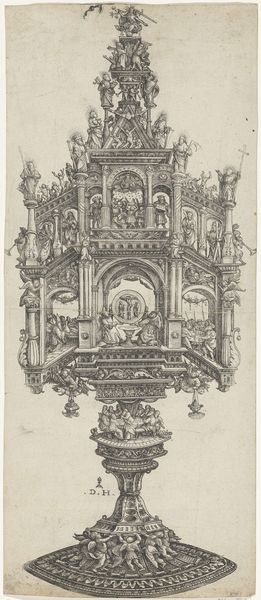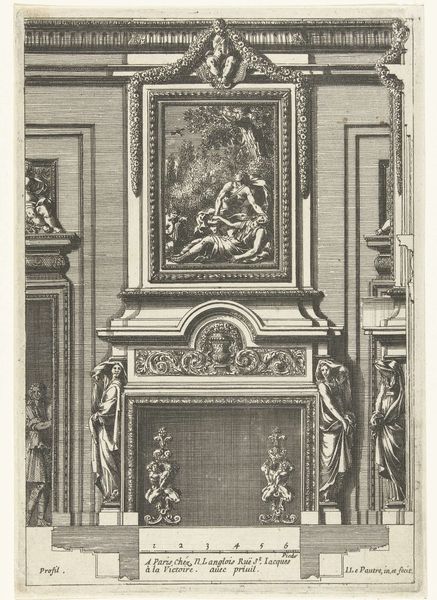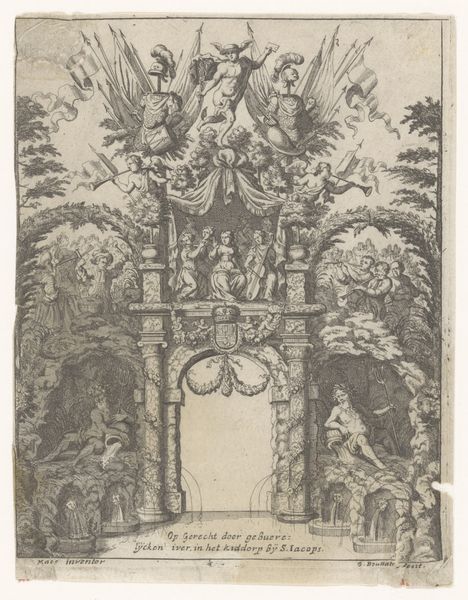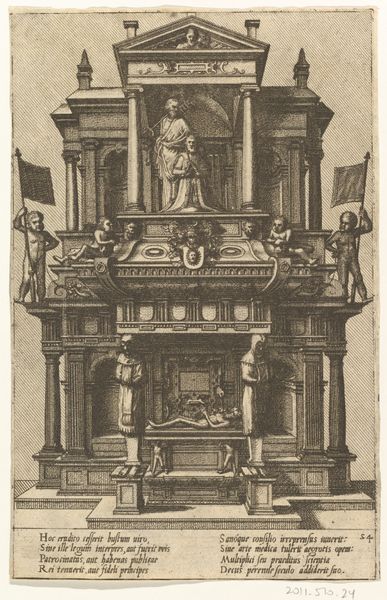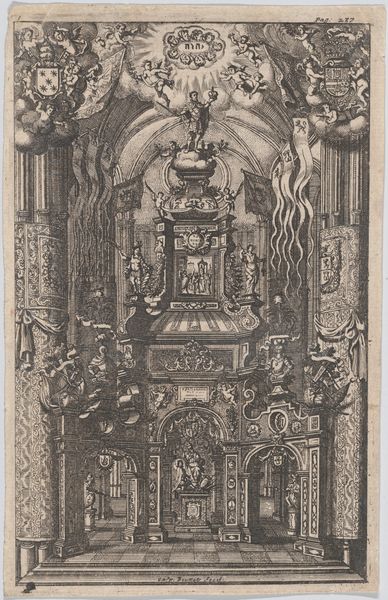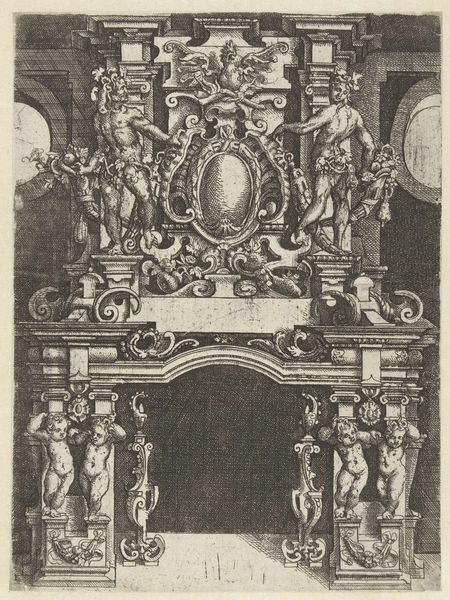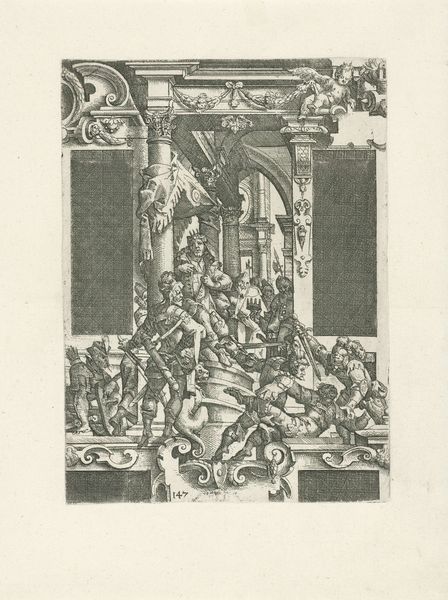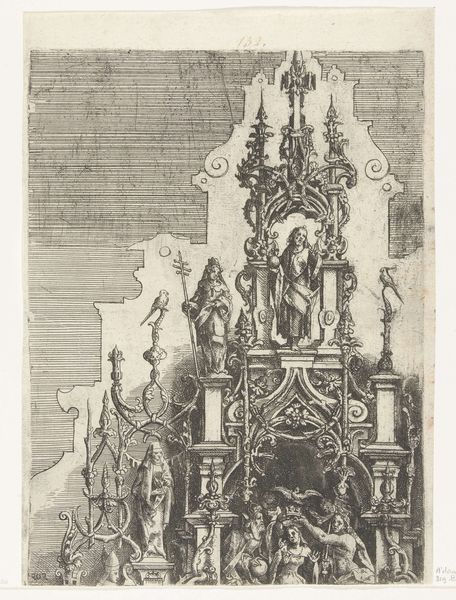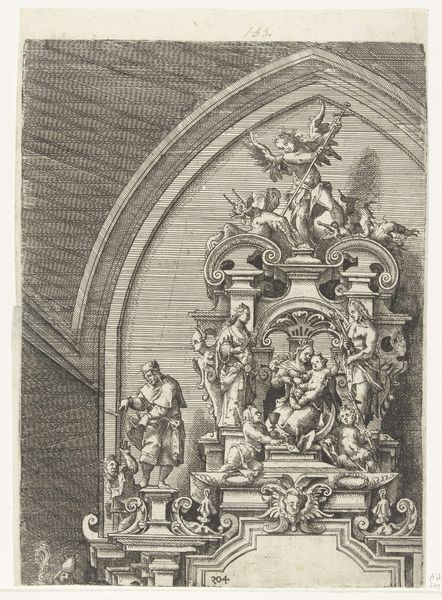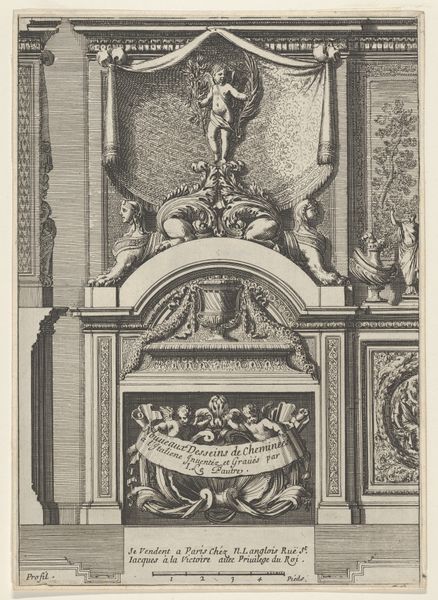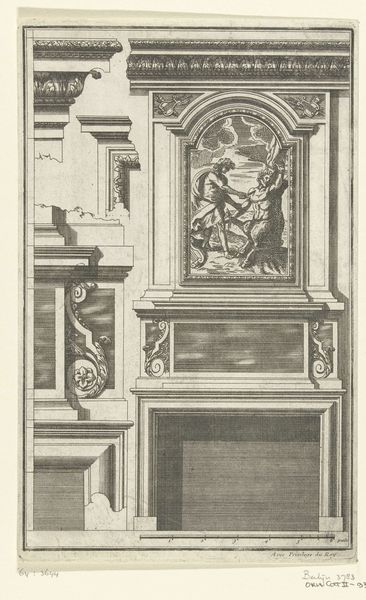
drawing, ink, pen, architecture
#
drawing
#
ink drawing
#
narrative-art
#
pen drawing
#
mannerism
#
ink
#
geometric
#
pen
#
architecture
Dimensions: height 247 mm, width 183 mm
Copyright: Rijks Museum: Open Domain
Curator: This is "Grote fontein, ingebouwd tussen drie muren," a drawing rendered in pen and ink by Wendel Dietterlin, active during the late 16th century. It represents a grand fountain built between three walls. Editor: The fountain design immediately strikes me as powerfully overwhelming! There’s an undeniable sense of opulent claustrophobia in the way this space is presented. What context would help us understand such intense detail? Curator: Dietterlin’s work exists within a fascinating cultural moment, situated in the late Renaissance during the rise of Mannerism. Consider how architecture in the 16th century served not just function, but propaganda and status. His focus on ornamentation, combined with architectural design, certainly highlights these ambitions. Editor: Absolutely. The layering of sculptural figures, shields, and grotesque masks embodies a spirit of lavish display, indicative of both secular and religious power. The pen and ink medium really captures this aesthetic tension. Do you find his precise linear work enhances or detracts from the architectural impact? Curator: The stark contrast definitely reinforces a sort of imagined grandeur, reflecting his style as a pattern book artist, creating examples and setting tastes, perhaps intended to guide courtly architecture and decoration, not necessarily for faithful, buildable constructions. Editor: This emphasis on imagined spaces connects it to narratives of ideal environments, divorced from actual social conditions, which complicates our relationship to these architectural fantasies. What narratives, exactly, were being imagined here? Curator: Dietterlin used architecture as a backdrop for expressing authority through symbolism. The figures enacting struggles throughout—a Herculean display—become metaphors of power enacted through violence, both aesthetic and maybe also sociopolitical. Editor: Considering contemporary attitudes regarding such violent expressions, I wonder how viewers might confront such overwhelming, arguably needless grandeur in times of economic disparity. The drawing becomes not just a period example but a challenge for interpreting how we engage with expressions of historical power. Curator: Acknowledging the artist's era enriches how the present confronts this past. We must not view these images without acknowledging the contexts from which they arose and how those dynamics influence today. Editor: Right, by contextualizing, the artwork can serve as a catalyst for interrogating today's architecture and societal power. Thank you for walking me through this experience!
Comments
No comments
Be the first to comment and join the conversation on the ultimate creative platform.

